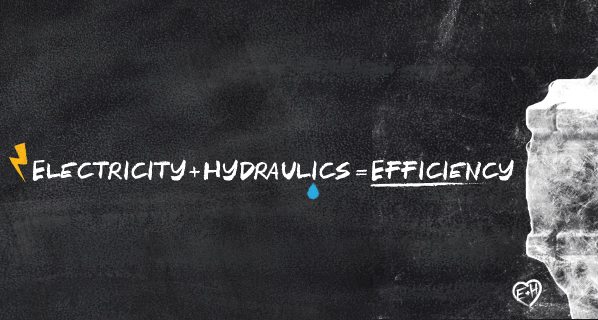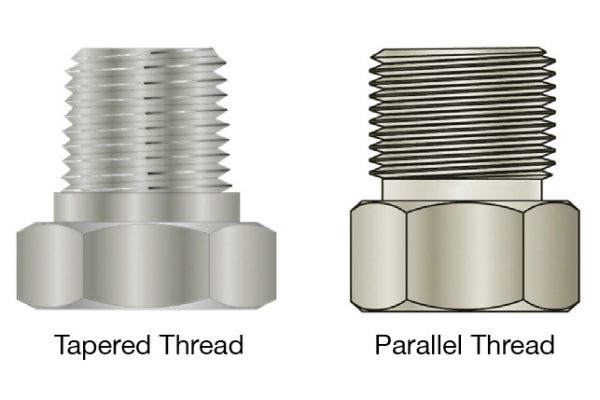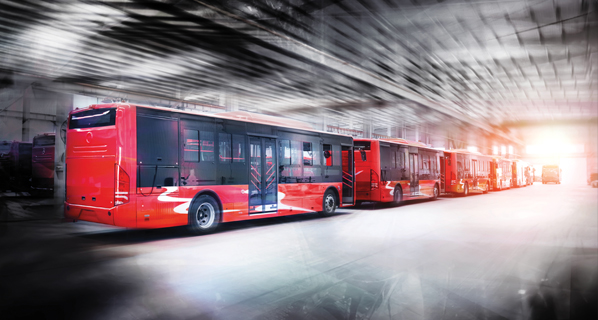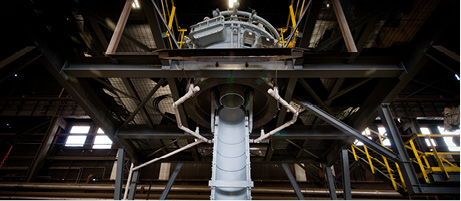Air Actuators Win Over Users with Durability and Long Service Life
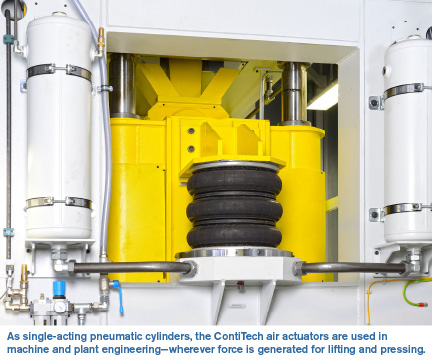
The air actuators are single-acting pneumatic cylinders, and are used in machine and plant engineering. Thanks to their robust and simple design, they offer unique advantages over conventional pneumatic cylinders in many application fields. They are used primarily where extreme force has to be generated and adverse ambient conditions prevail.
In addition to the standard range, there are also special material designs available as catalog items for particular applications. For instance, there are air actuators that are heat resistant for temperatures up to 257°F (high-temperature versions) or cold resistant down to -75°F (low-temperature versions). ECO air actuators are used in the case of aggressive media in the paper-producing and chemical industries.
A Simple Design Full of Advantages
Air actuators can withstand high dynamic loads. The materials used have been optimally tried and tested in the production of commercial and passenger vehicles, as well as rolling stock. The dimensionally stable elements in their design are compatible to that of a tire or an air spring. This simple construction allows for complete solutions that are cost effective. The rodless construction functions without parts or seals moving against each other. This prevents any stick-slip effect, thus eliminating static friction. The actuators respond immediately and uniformly, even to small variations in pressure. In pneumatic applications, they can be operated using either oil-free or lubricated compressed air.
Depending on the product type, the air actuators can be used for tilt angles up to 30°. This characteristic enables the designer to avoid costly connecting elements and articulated constructions. The air actuators also continue to operate reliably even with a lateral displacement of up to 0.79″. The small design height means that they can be integrated in compact constructions. When unpressurized, they can be installed quickly and easily, thereby saving time and money. Another advantage: Their flexibility allows air actuators to even compensate for assembly inaccuracies, once again demonstrating their versatility.
Frictionless and Low Wear
Particularly under harsh operating conditions involving dirt, dust, particles, or mud, air actuators are often significantly superior to conventional pneumatic and hydraulic cylinders, for example in wood processing, which generates coarse-grained particles. With conventional push-rod cylinders, the particles can accumulate on the push rod, resulting in wear and leakage when moving through the sealing elements. In comparison, air actuators have no sliding seals or articulated joints. In air actuators, the stroke results from deformation on the bellows wall. Dirt particles on the bellows wall stay outside and do not come in contact with sealing parts. Air actuators are also low wear, even in adverse operating conditions. Where actuators are used, the costly precision guides required for conventional pneumatic cylinders, which are sensitive to dust and dirt, are not needed.
Uniform Contact Pressure in Rail Transport
One example of the frictionless function of the air actuators is the application of these products in pantographs, which are used for transferring current from a fixed overhead power line to rail vehicles. They ensure uniform contact pressure in changeable weather conditions and at high speeds. Air actuators function reliably and free of friction throughout their long service life.
Product Types
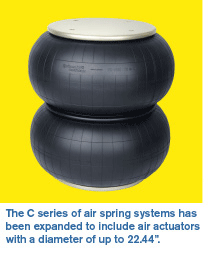 ContiTech has over 50 years of practical experience with air actuators. Over this time, various air spring designs were developed, which can be subdivided into convoluted air spring and rolling lobe air spring designs.
ContiTech has over 50 years of practical experience with air actuators. Over this time, various air spring designs were developed, which can be subdivided into convoluted air spring and rolling lobe air spring designs.
Among the convoluted air springs, there are single, double, and triple wall types, also known as single, double, and triple convoluted air springs. Rolling lobe air springs are supplied with and without end beads. In the version with end beads, the connecting parts are formfit to the bellows. Another type of air actuator is the sleeve-type rolling lobe air spring, in which the connecting parts are joined to the bellows like on a hose, using clamping sleeves, also known as “clamping rings.” Both designs originally came from the development of air springs for passenger and commercial vehicles.
The company’s product range of convoluted air springs is structured according to the design of the fastening and connecting parts: C, D, and R types. C types are air actuators that are single, double, or triple convolution air springs with a formfit, airtight connection with metal plates. These metal plates have fastening and air connection threads. D types are air actuators with two-part, removable connecting components. (Air actuators with open bead-ring connecting parts are referred to as “R types.”) These connections seal the actuator directly to the machine. Their bead rings made from metal act as a flange and can be connected directly to the machine. They are available with diameters of between 5.70″ and 37.40″. The range of air actuators for industrial applications is rounded off with sleeve air springs with plastic connecting parts, known as “S types.” This design is derived from the manufacture of commercial vehicles, where they are used as seat and cab mounts, for example.
Complete Range Available Around the World
Available in a broad product range and as customized individual deigns, the air actuators are capable of dealing with even the toughest pneumatic jobs in machine and plant engineering. The pneumatic cylinders are available with diameters ranging from 2.36″ to 39.37″, strokes of up to 20.48″, and standard pressure of 116 psi. They have a lifting power of 112 lbs to 98,915 lbs. Designs for operating pressures of up to 232 psi are also available for special applications.
For more information: CONTITECH AIR SPRING SYSTEMS IS A CONTITECH AG BUSINESS UNIT AND MANUFACTURER OF AIR SPRING SYSTEMS FOR COMMERCIAL VEHICLES, BUSES, ROLLING STOCK, STATIONARY MACHINES, AND FOUNDATION BEARINGS. AIR SPRING SYSTEMS SERVE AS VIBRATION-ISOLATION DAMPENERS IN HEAVY-DUTY SYSTEMS, WHILE AIR ACTUATORS ARE USED IN PNEUMATIC APPLICATIONS TO APPLY A FORCE. VISIT WWW.CONTITECH.US OR E-MAIL INFO@CONTITECH-USA.COM.

